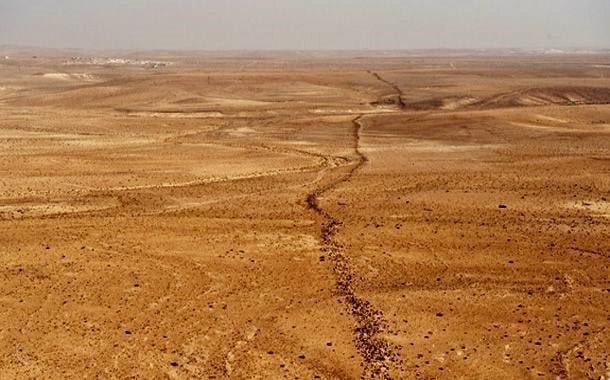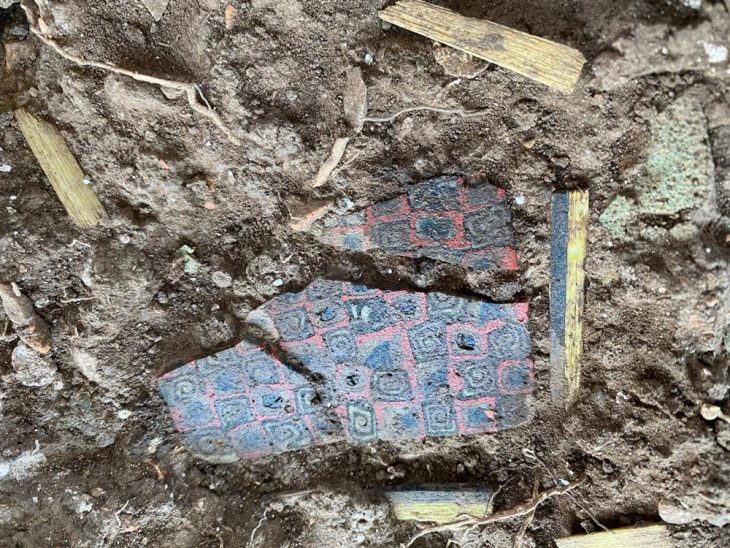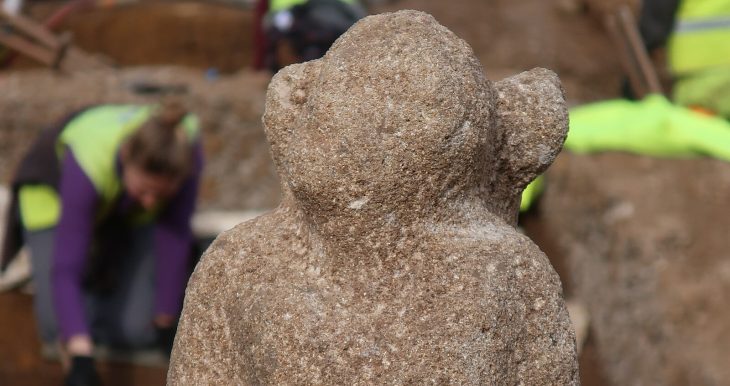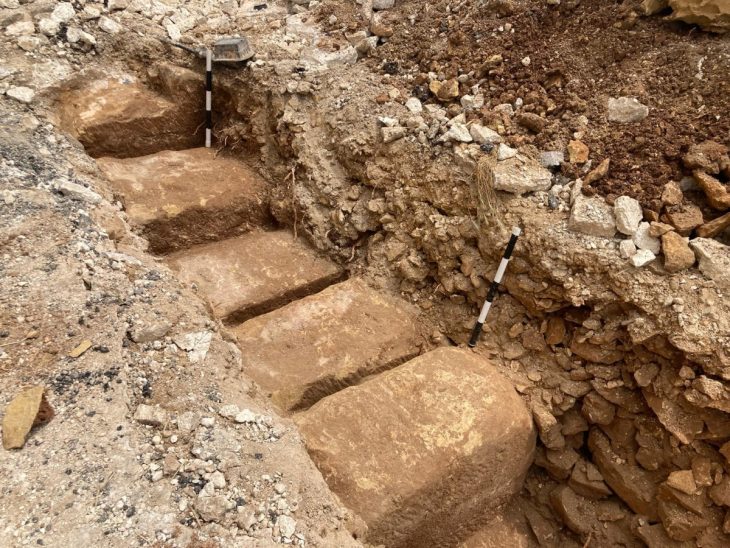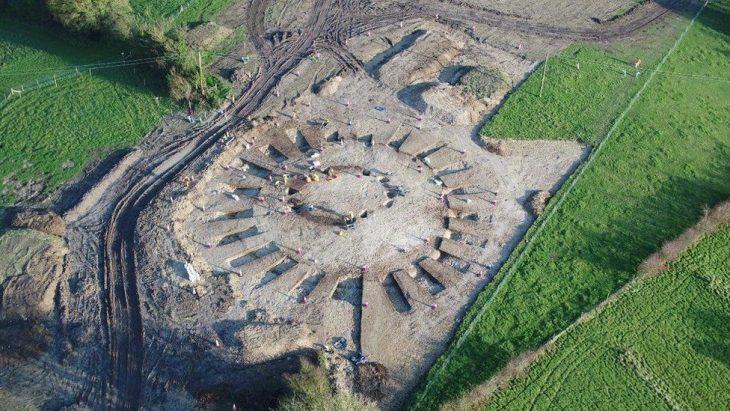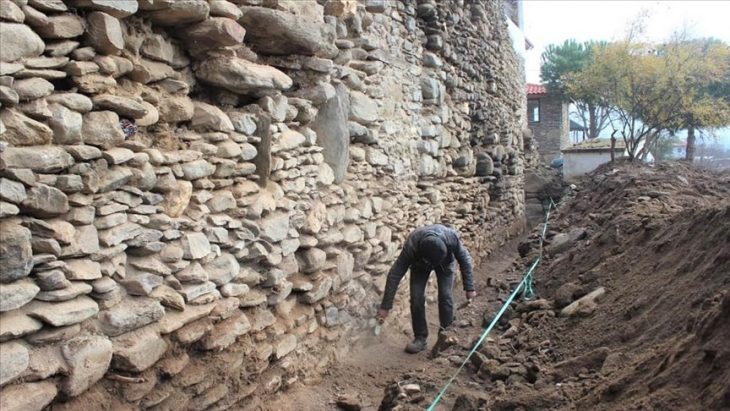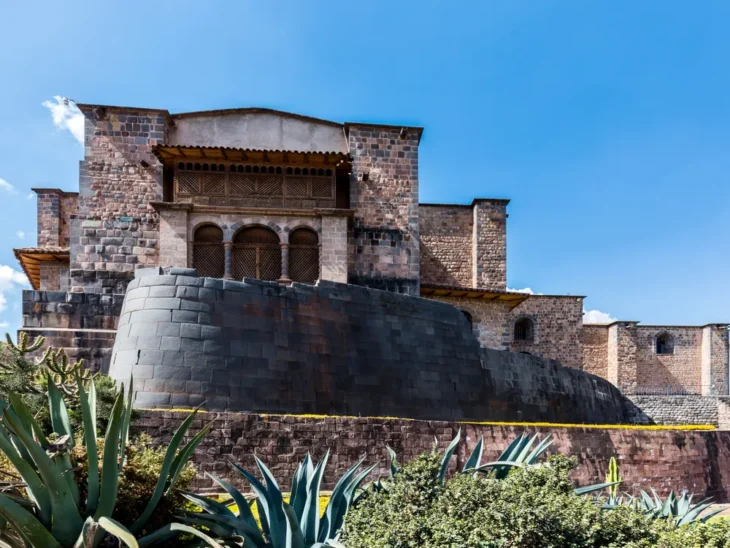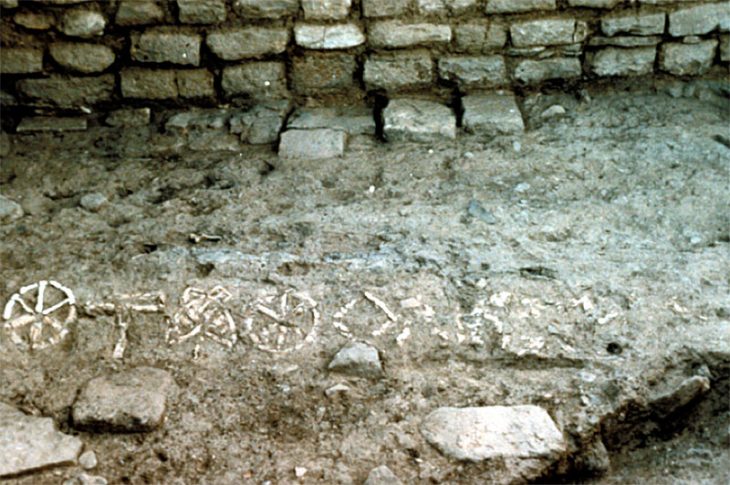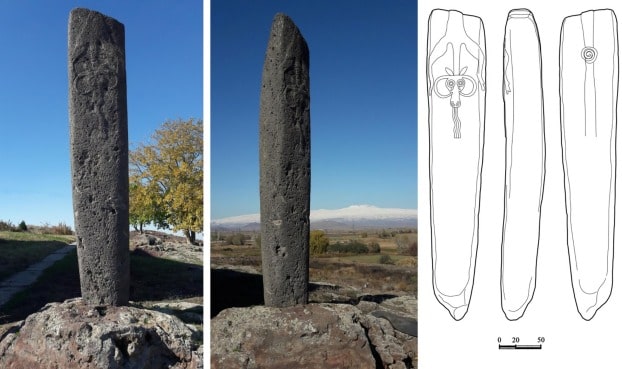The accomplishments of ancient civilizations are typically woefully underappreciated because we stereotype them as primitives who only wore loincloths, and when we’re proven wrong by some impressive feat of engineering, we just make a ton of documentaries about extraterrestrial life.
Humanity has made enormous progress—especially over the course of the last centuries. However, there are still mysterious structures that we cannot fully explain. One of them is the Khatt Shebib wall.
An ancient wall that extended 150 kilometers (93 miles) in southern Jordan has left archaeologists with a series of mysteries, including questions over when the wall was built, who built it, and what its purpose was.
The Khatt Shebib is a mysterious linear stone feature that runs for 150 kilometers. The wall’s existence was first recorded in 1948, by Sir Alec Kirkbride, a British Ambassador to Jordan. While flying over the Ma’an district in the south of the country, he saw a “stone wall running, for no obvious purpose, across country.” A local inhabitant told him it was called Khatt Shebib (Shebib’s Wall).
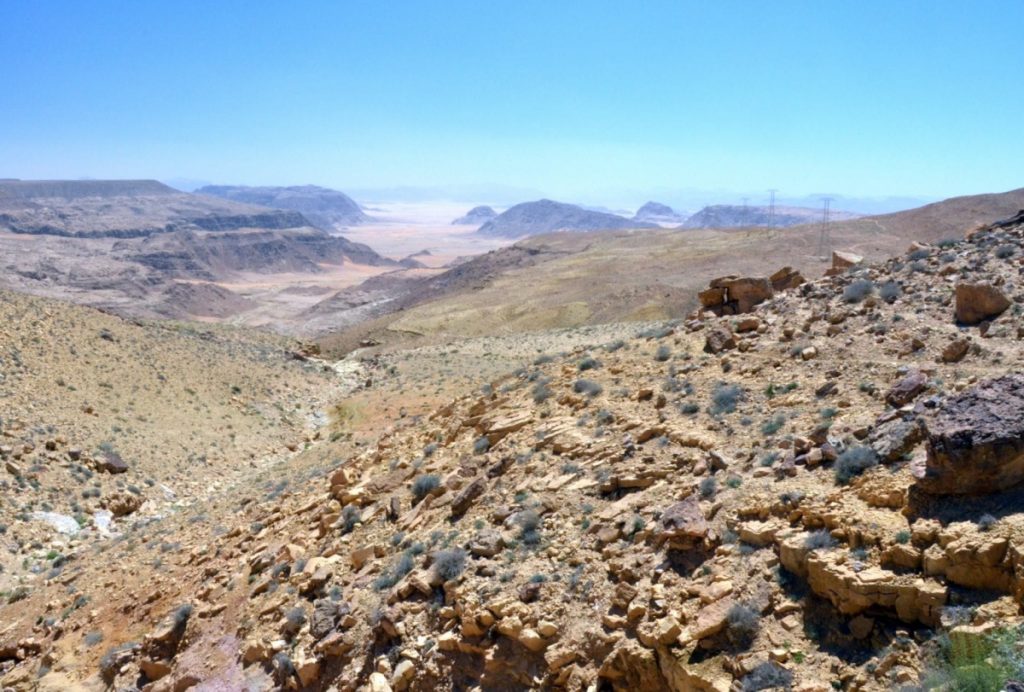
The researchers found that the wall runs north-northeast to south-southwest over a distance of 66 miles (106 km). The structure, they found, contains sections where two walls run side by side and other sections where the wall branches off. Khatt Shebib actually consists of several walls, some branching off the main line, while elsewhere, double walls run side by side. Ultimately its overall length is about 150 km.
The wall, now largely in ruins, once stood a little over three feet tall, and has some 100 towers built alongside it standing six to twelve feet tall.
Uncertainty surrounds the start date of Khatt Shebib’s construction. Although it was initially believed to be medieval in origin (tenth century CE), the consensus is that it is much older based on its connections to other structures. Recent, limited, scientific dating work using optical techniques supports a possible prehistoric date for its origins.
Sir Alec and many after him assumed that the wall structures dated to Roman times, mainly because of the many Roman border fortresses lined up in its vicinity.
Some scholars believe it was constructed between the Nabatean period (312 B.C.-A.D. 106) and the Umayyad period (A.D. 661-750), but more fieldwork is required to determine its exact function.
Scientists have made several assumptions about the possible uses of the towers, if not the wall. These: Some may have been places of refuge — a secure place to overnight. Others may have been [used] as watch posts. Some, perhaps, [were] places in which hunters could hide until browsing fauna was close enough to try and bring down,” they think.
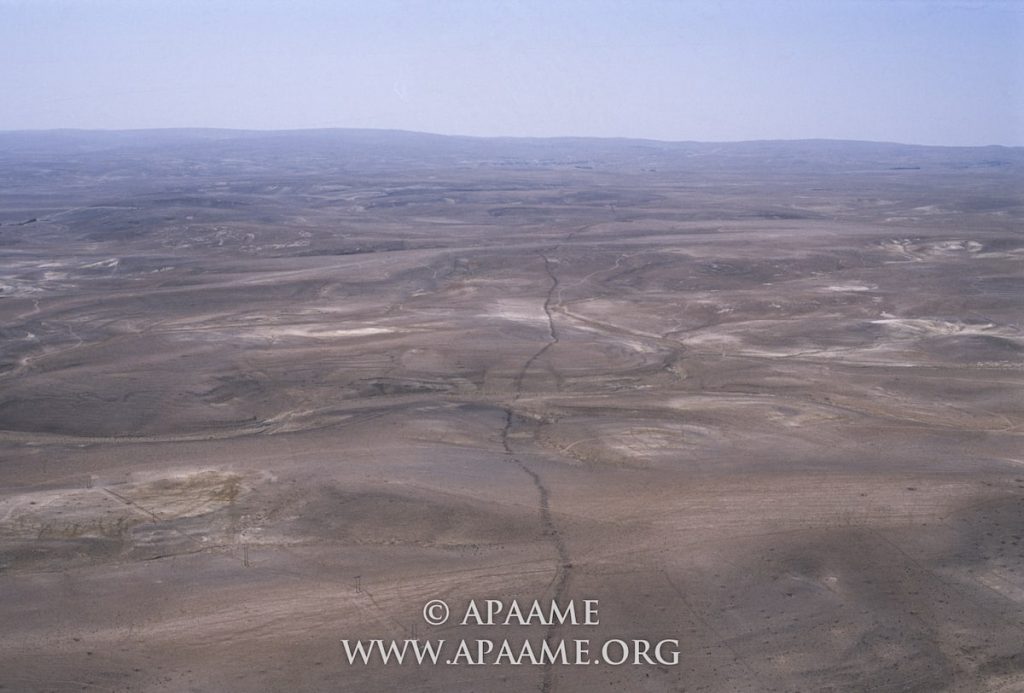
However, the study leaves archaeologists with a number of unanswered questions: When was the wall constructed? Who designed it and why?
What the purpose of the vast edifice might have been still eludes scientists.
The various walls comprising the Khatt Shebib are believed to have been a meter to a meter and a half in height, and made up of stones heaped one on top of the other. Given its length, building it was a massive endeavor, whenever it was done.
It’s impossible to say who built the wall first because it’s made of loose fieldstones. But it was a huge effort. Archaeologists say that even if the wall was only a few meters high, the difficulty of gathering large, heavy stones and assembling them into a wall could be a sign of centralized organization.
The wall and towers are just two of the many enigmatic features found in Jordan’s deserts, which the Bedouins refer to as “The Works of the Old Men.” Giant geoglyphs and earthworks in the shapes of rings, kites, and wheels, which are practically invisible on the ground but clearly visible from the air, have given rise to theories – some quite bizarre – but very few answers.
Ultimately, more on-the-ground fieldwork is needed to solve these mysteries.

